The Place
Chef Tom Ryu (previously of Jeju Sagye and Pado) recently launched his own restaurant group – P.I.E. – with not one, but two new venues on Wuyi Lu.
And what has emerged first from its chrysalis is NABI – the Korean word for butterfly – representing this colorful-winged creature's ability to transform, emerging as something both delicate and kaleidoscopic in its beauty.

Chef Tom Ryu, Image by Sophie Steiner/That's
Chef Tom Ryu is a bit of an icon in Shanghai, famed for having his hand (and newly butterfly-inked forearm) in many of the city’s top Korean restaurants.
He prides himself on sharing the authentic flavors of his home country, ones that go far beyond BBQ, bibimbap and that green bottle soju associated with entry-level Korean dining.
And NABI does just that – exploring regional Korean cuisine in a fine dining setting.

Image by Sophie Steiner/That's

Image by Sophie Steiner/That's
The focal point of the space – the open kitchen – is akin to a surgical viewing room, the guests acting as med students, observing and learning from the operation.
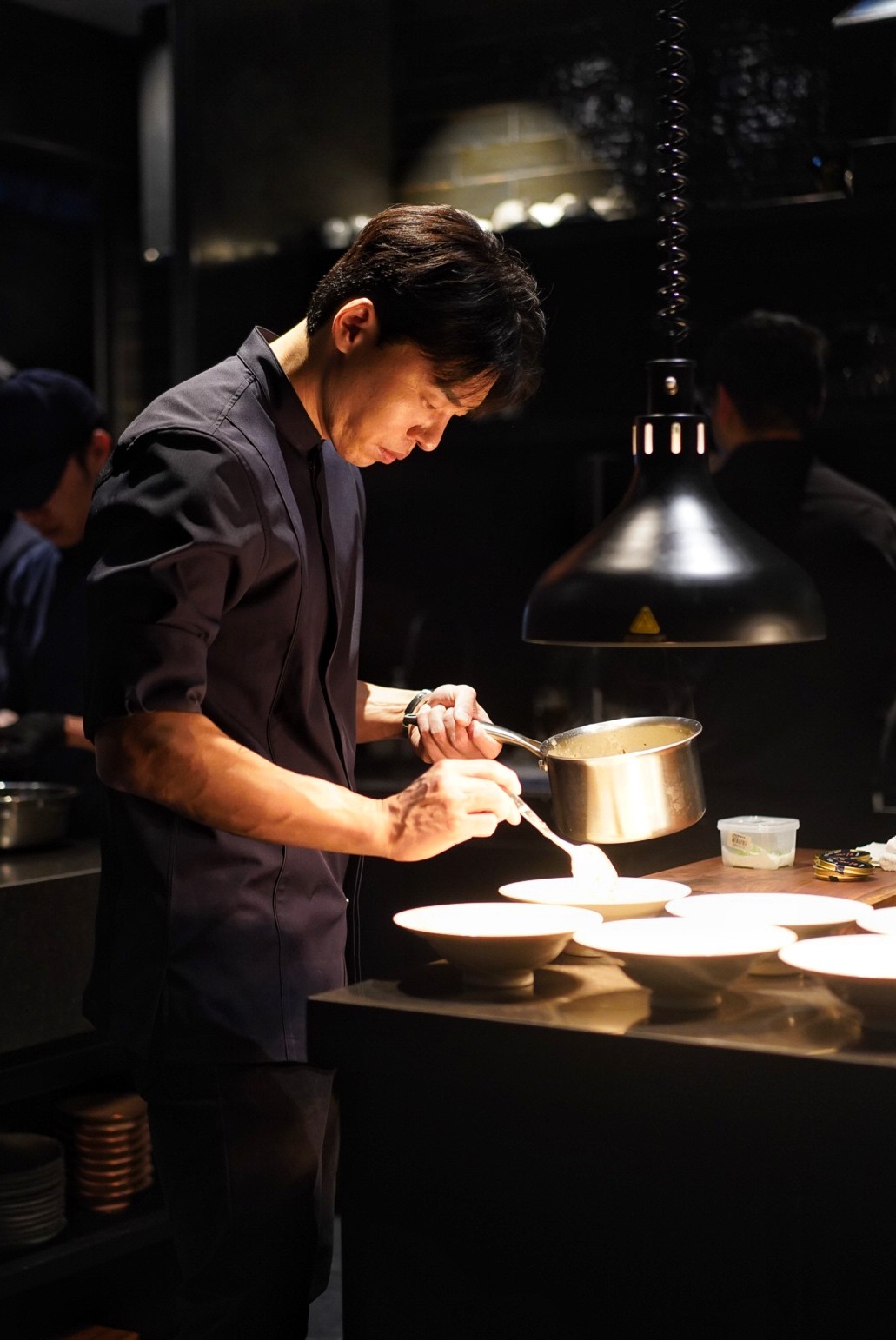
Image by Sophie Steiner/That's
But instead of scalpels, forceps, and scissors, Ryu’s team methodically works with tweezers, whisks, and pairing knives – always two courses ahead – simultaneously ensuring both streamlined service and visual entertainment.
The Food
The 12-course set menu is currently priced at RMB1,088* with an optional RMB388* for Korean sool – or alcohol pairing – an essential element to the dining experience.
*Plus 10% service charge

Image by Sophie Steiner/That's
Compared to Chef Tom’s previous work at Jeju Sagye, the menu at NABI has a stronger focus on seasonal ingredients, changing every three months, each iteration known as a metaphorical "flap" – or fluttering of the NABI butterfly's wings.
Placing an emphasis on the correlation between art, design and cuisine, NABI is higher end and larger when compared with Jeju Sagye’s cozy, izakaya atmosphere.
Now what you’ve all been waiting for, let’s slink into the debut menu, one that bridges winter to spring produce and proteins through temporal plates.

Image by Sophie Steiner/That's
Beginning with a duo of fried seaweed crisps, Bugak is a snack common to Namwon, a city in southern South Korea, made from kelp, seaweed, or even perilla leaves coated in glutinous rice paste, dried and then fried.
The first seaweed chip is topped with potato cream, a fistful of shaved truffle, and soybean paste; the latter crowned with supple diced scallop to augment the seaweed’s naturally balanced sweet and umami notes.

Image by Sophie Steiner/That's
Velvety Juk is simmered with gijang seaweed, hailing from Busan on the peninsula's southern coast, where turbulent currents in spring cause the seawater and organic matter to intermix, resulting in a robustly aromatic premium sea algae.
Similar to Chinese congee (zhou 粥), this comforting rice porridge acts as the base for a flash-fried wedge of rockfish, buttery sea urchin, and glistening beads of caviar that add a nuanced salinity that salt or soy alone can’t provide.
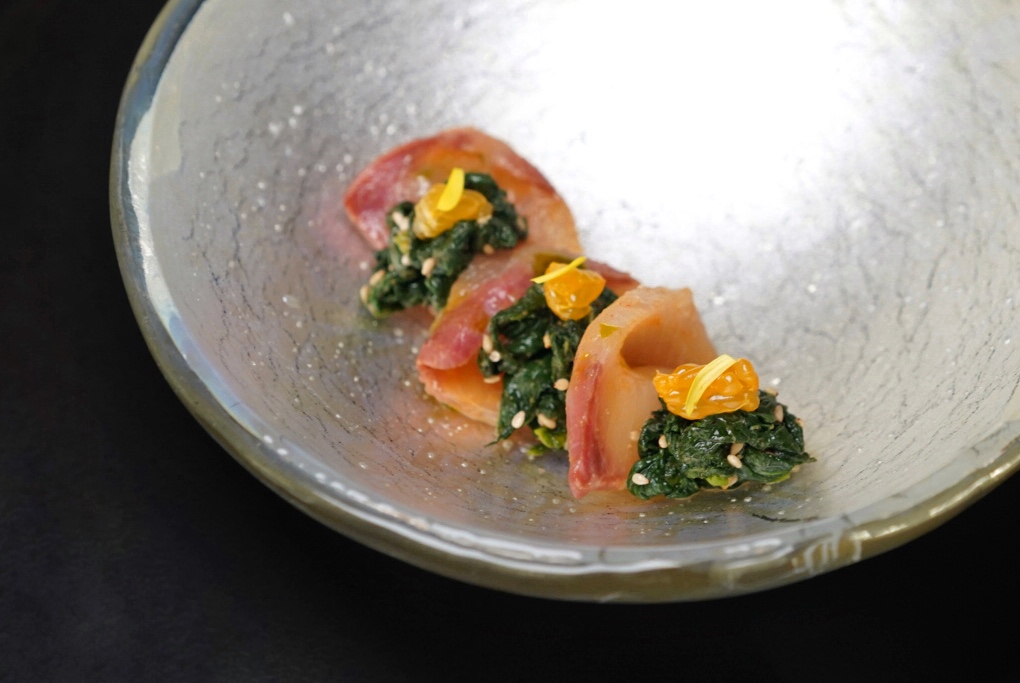
Image by Sophie Steiner/That's
Yellowtail caught in the chilly waters off Jeju Island is folded into pudgy pleats as Muchim, bookended by sesame seed-tossed greens.
Dotted with doenjang – a fermented soybean paste – and tart tangerine segments, this higher fat content fish is at its prime at this time of year, explaining why its customarily eaten sashimi style in Korea during the winter months.

Image by Sophie Steiner/That's
Steeped in history, Tang is inspired by a rice-cake laden milky bone broth known as tteokguk, a soup that has been eaten for centuries during the Lunar New Year.
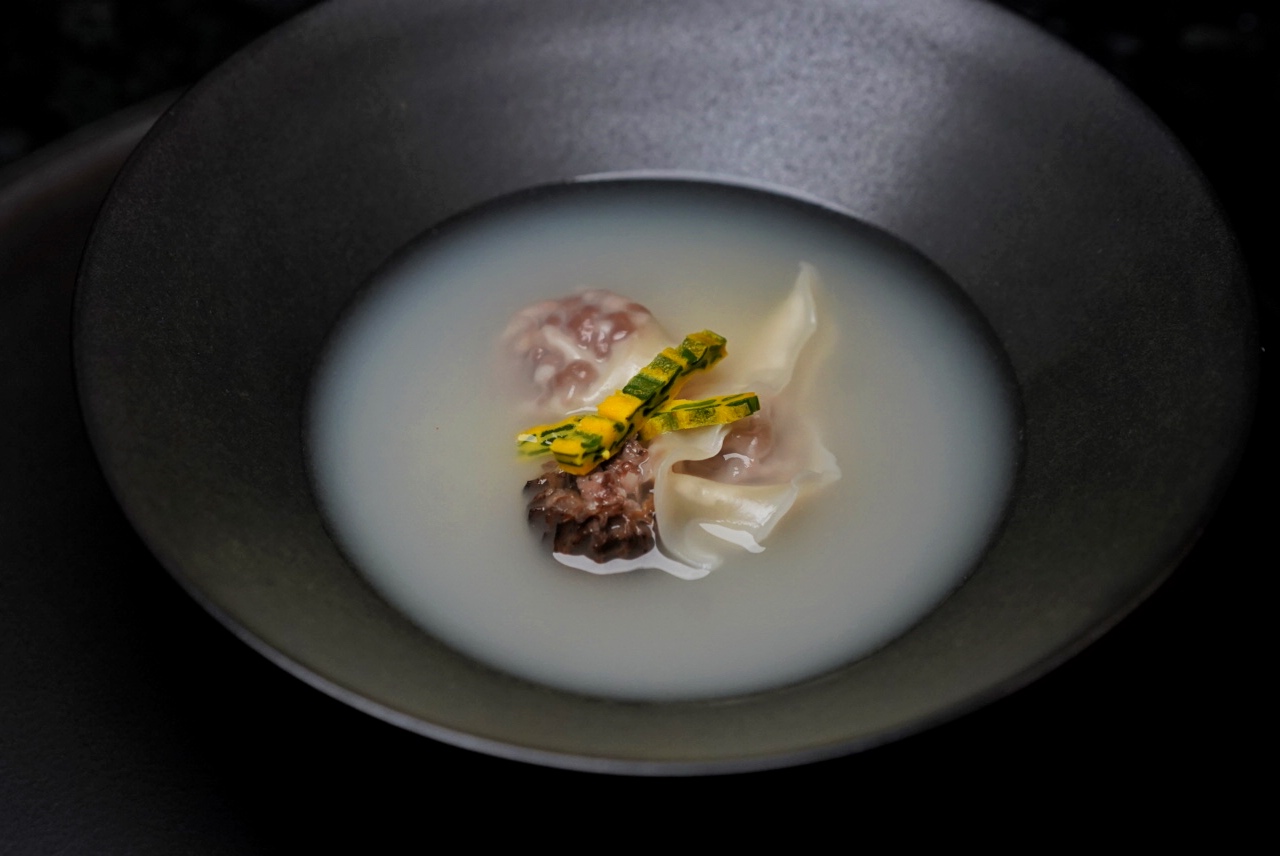
Image by Sophie Steiner/That's
Poured tableside over a trio of dumplings – galbi beef, lettuce kimchi, and morel mushroom rice cake – this bovine-forward consommé is finished with an egg and leek tuille.
 Dried Anju (RMB58) – homemade North Korean pollock crackers, dried squid, fried Bori shrimp – a common Korean drinking snack. Image by Sophie Steiner/That's
Dried Anju (RMB58) – homemade North Korean pollock crackers, dried squid, fried Bori shrimp – a common Korean drinking snack. Image by Sophie Steiner/That's

Image by Sophie Steiner/That's
Pinched at the top and poached to mimic bulging burrata, a freshly poached egg oozes yolk when pierced, draining into the crab emulsion below, and resulting in the ideal shmaltzy pottage to coat each individual crab shred as the Jjim.
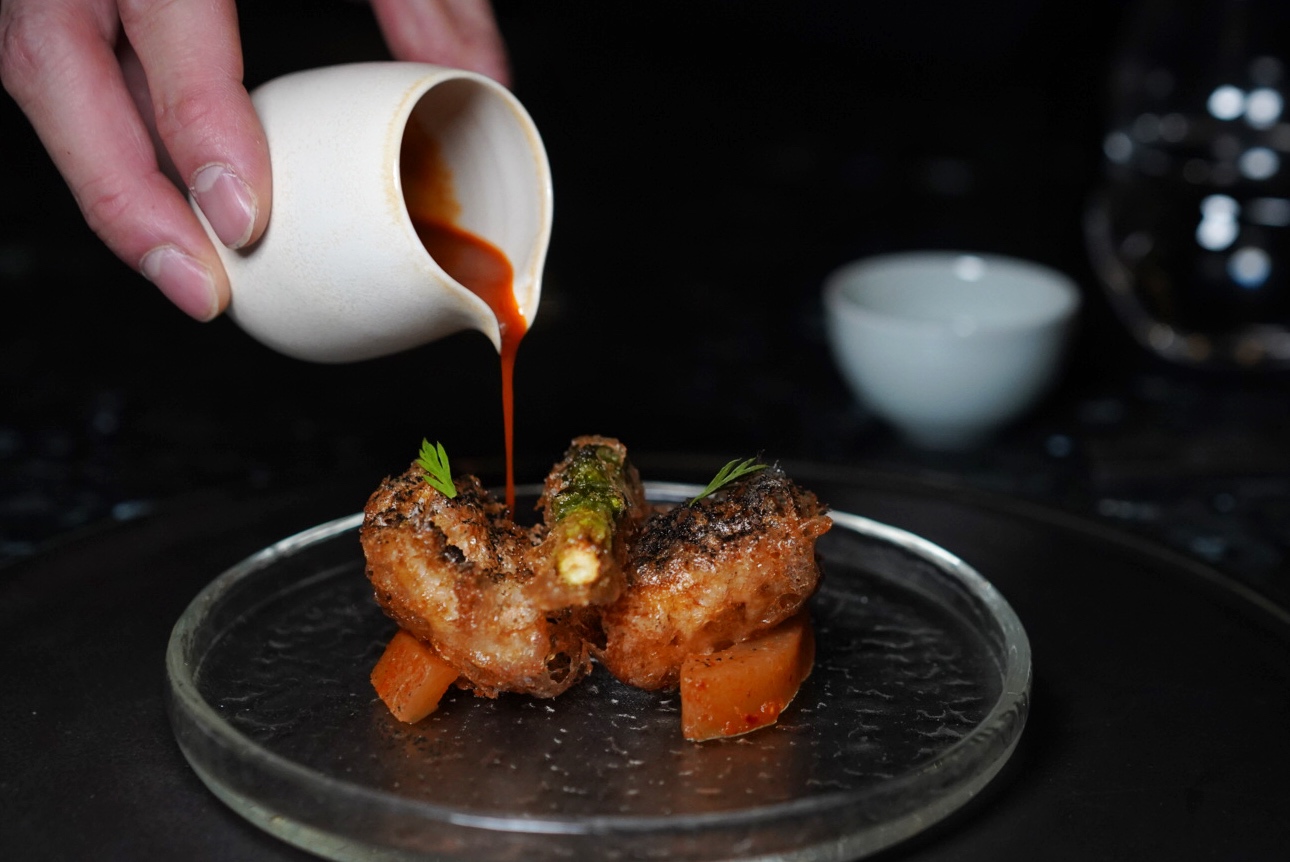
Image by Sophie Steiner/That's
Jorim features a crackly canvas of tempura-like coating sheathing asparagus and golden threadfin bream, a bite that alternates between shatteringly crisp and effortlessly light.
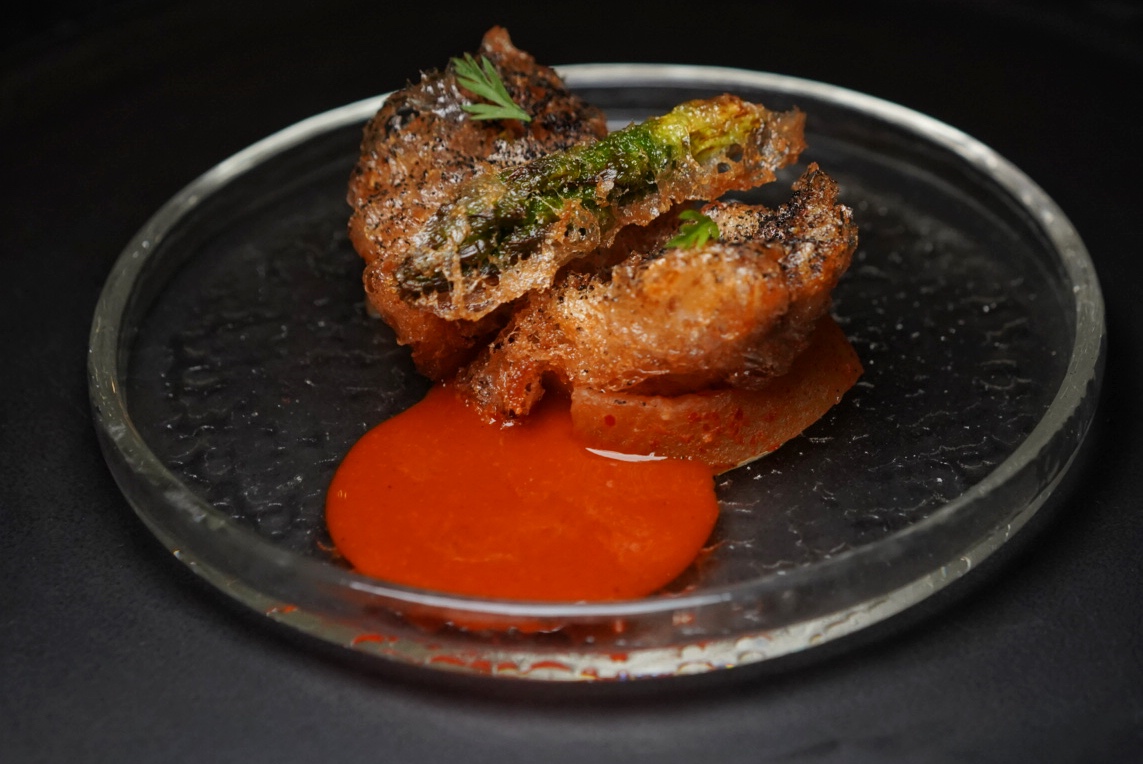
Image by Sophie Steiner/That's
The spice-flecked seafood sauce is dribbled tableside, bleeding into the lacey crust’s porous nooks – an unstaunchable crimson hemorrhage of oceanic sweetness.

Image by Sophie Steiner/That's
Referring to the distinctly smoky aroma emitted by charcoal, Guyi showcases smoked duck breast tteokgalbi – or grilled meatballs – lacquered in a gochujang glaze, and flanked by paper thin stripes of pickled cabbage.

Image by Sophie Steiner/That's
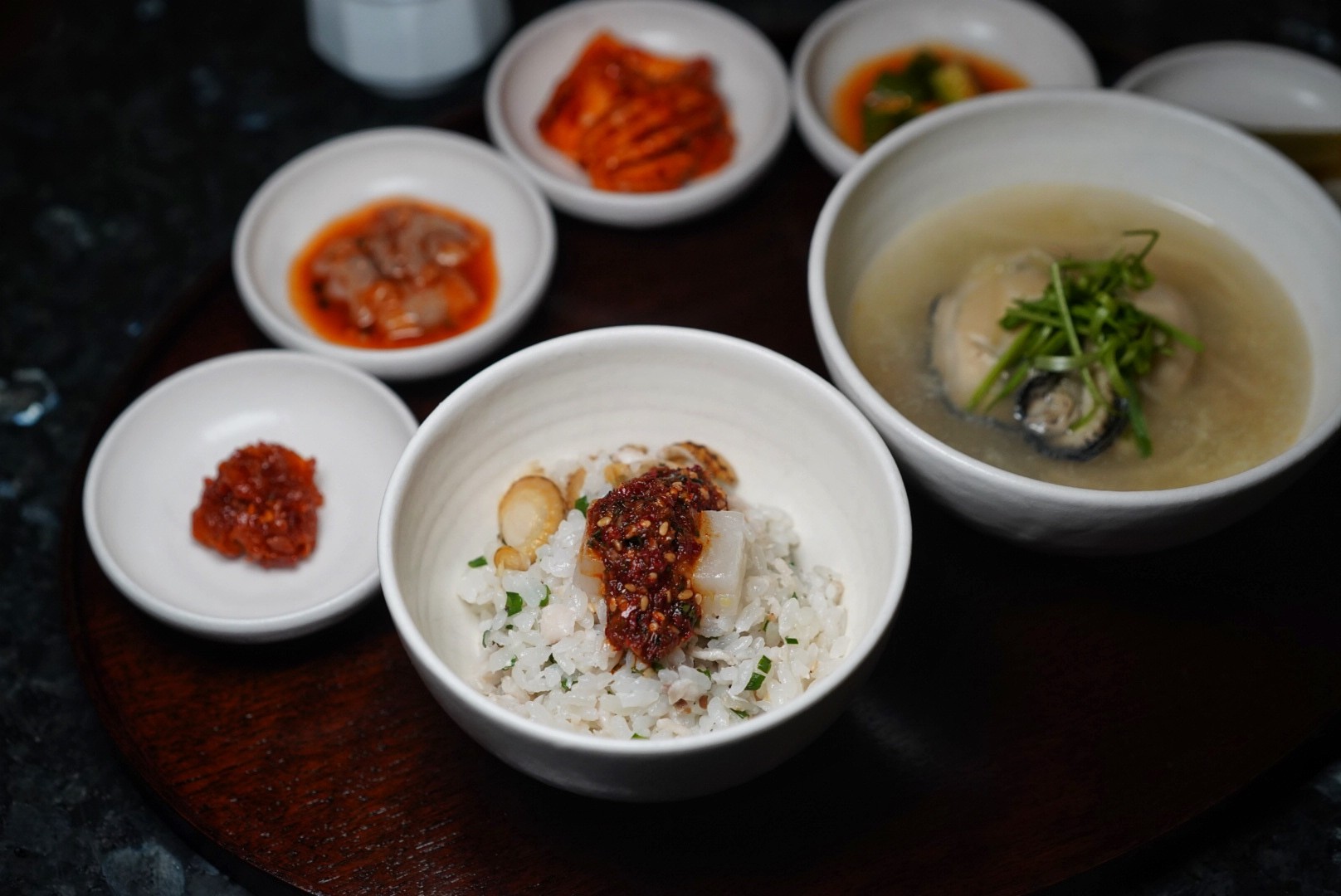
Image by Sophie Steiner/That's
The restaurant’s pièce de resistance, Bap, sees Ryu’s grandma’s bibimpap recipe come to life in an earthenware pot filled with rice, Jeju Spanish mackerel and red scallop.
A slow and low steaming allows the seafood to imbue the pot’s perimeter of rice crust. Like guoba (锅巴), the rice retains some of its original chew with the added bonus of crunch, finished with homemade gochujang.
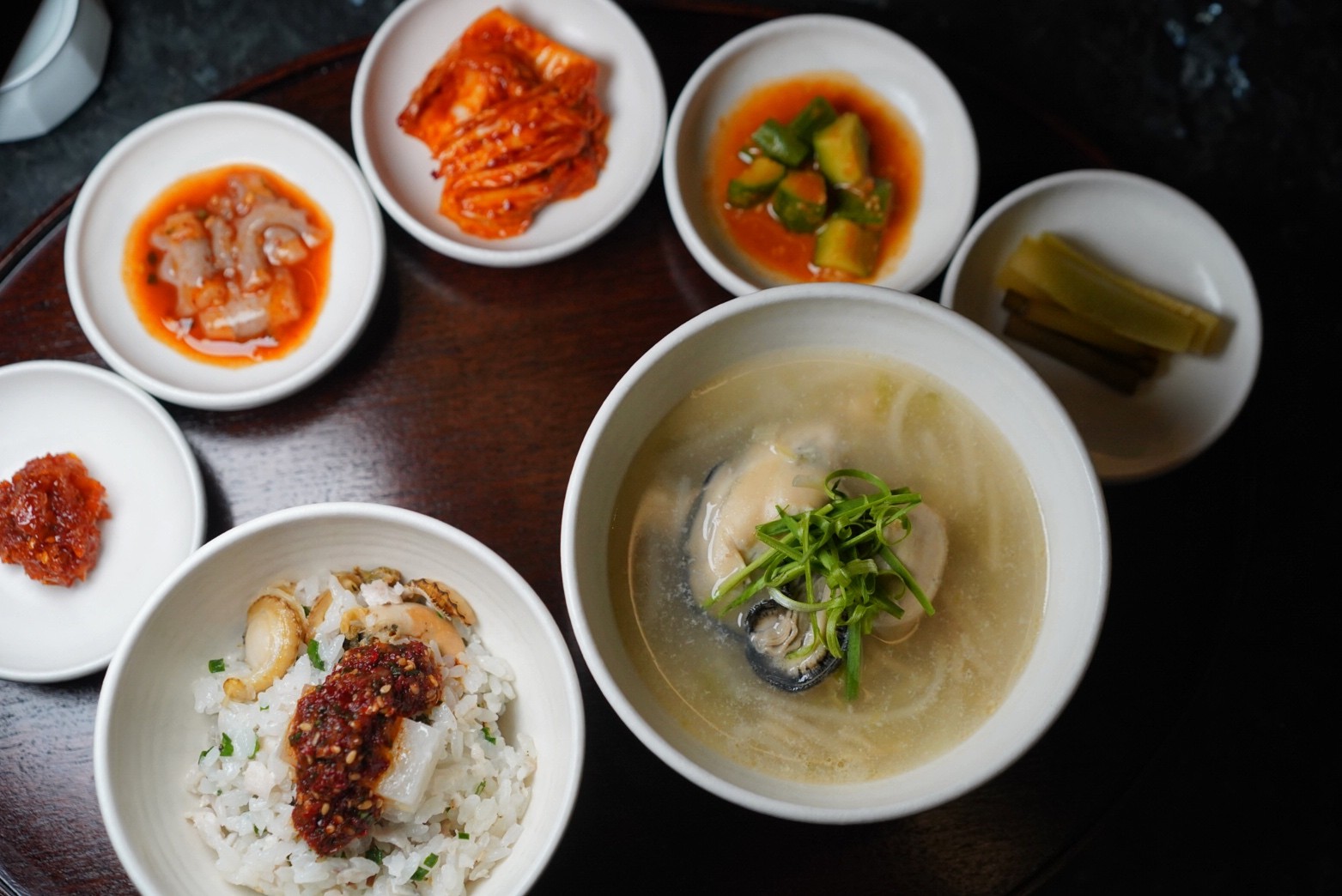
Image by Sophie Steiner/That's
Referred to as the “milk of the sea,” plump Tongyeong oysters are the focal point of Guk, an opaque seafood broth enhanced by wisps of dried North Korean pollock.
Served alongside the aforementioned rice with an array of homemade pickles, kimchi and condiments, this course is best savored with a glass of Han Cheung – or Korean sake – demurely honeyed yet clean.

Image by Sophie Steiner/That's
While the vastly diverse range of regional Korean cuisine may feel insurmountably esoteric, the homemade Ramyun (RMB48) – an optional yet must-order add-on – alleviates any unsurety.
Silken homemade egg noodles, at once springy and slurpable, are steeped in a broth of dried and finely ground rump roast, mushrooms, onions and shrimp.

Image by Sophie Steiner/That's
To amplify the already pungent seafood fragrance, the bowl is adorned with two succulent prawns, astride a bean sprout and spring onion salad.
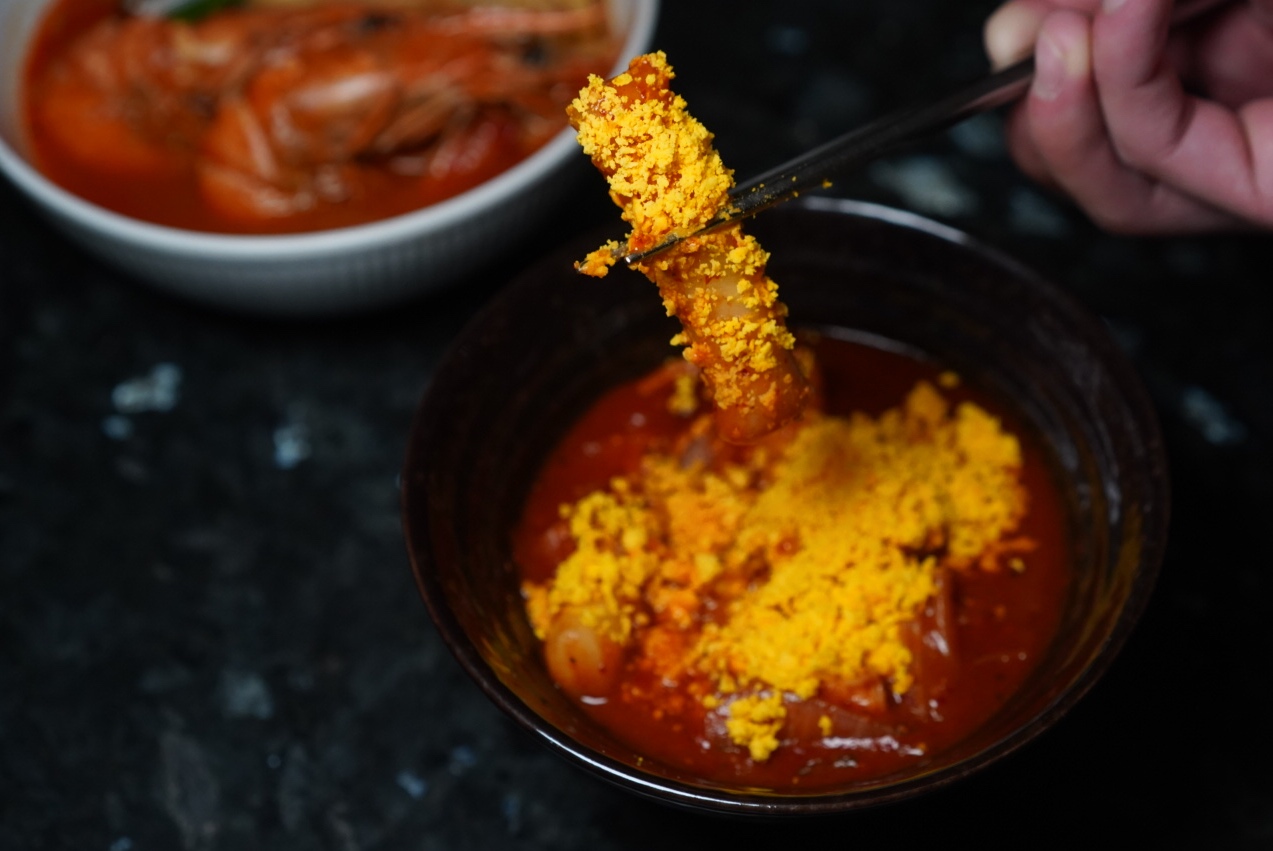
Image by Sophie Steiner/That's
Expertly gummy (without being gooey) homemade rice-cake Tteokboki (RMB38) and fish cakes are slathered in a Korean gochujang fiery sauce, the brazen spice tempered by an egg yolk powder.
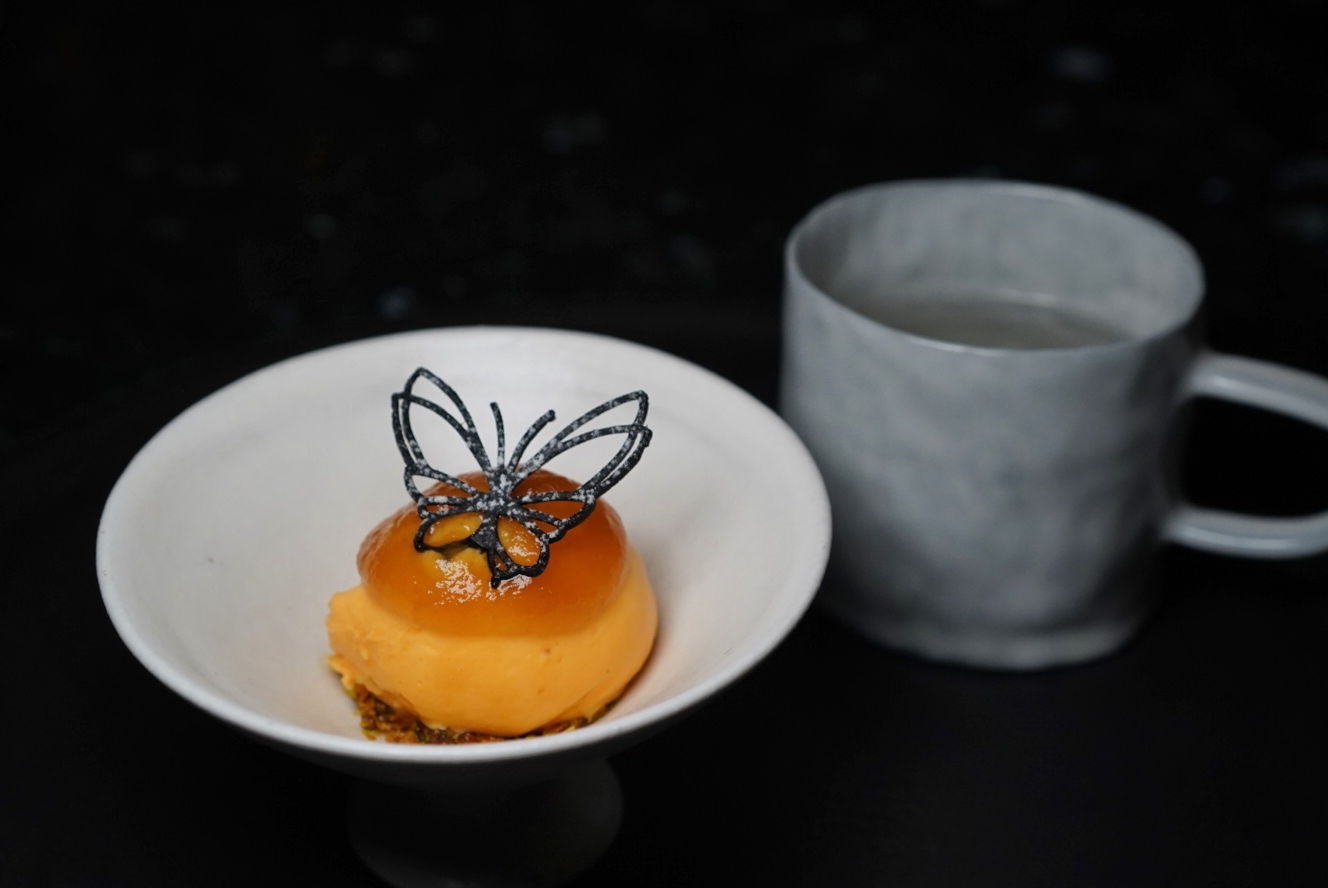
Image by Sophie Steiner/That's
Dessert offers an earthy pistachio crumble that coaxes out additional saccharinity from yam ice cream, draped in a winter pear jam, and paired with treacly pumpkin makgeolli – Korea’s oldest alcoholic beverage.
 Petite Four – Korean pumpkin rice cake; black sesame chocolate; and bungeoppang – a fish-shaped pancake filled with red bean paste. Image by Sophie Steiner/That's
Petite Four – Korean pumpkin rice cake; black sesame chocolate; and bungeoppang – a fish-shaped pancake filled with red bean paste. Image by Sophie Steiner/That's
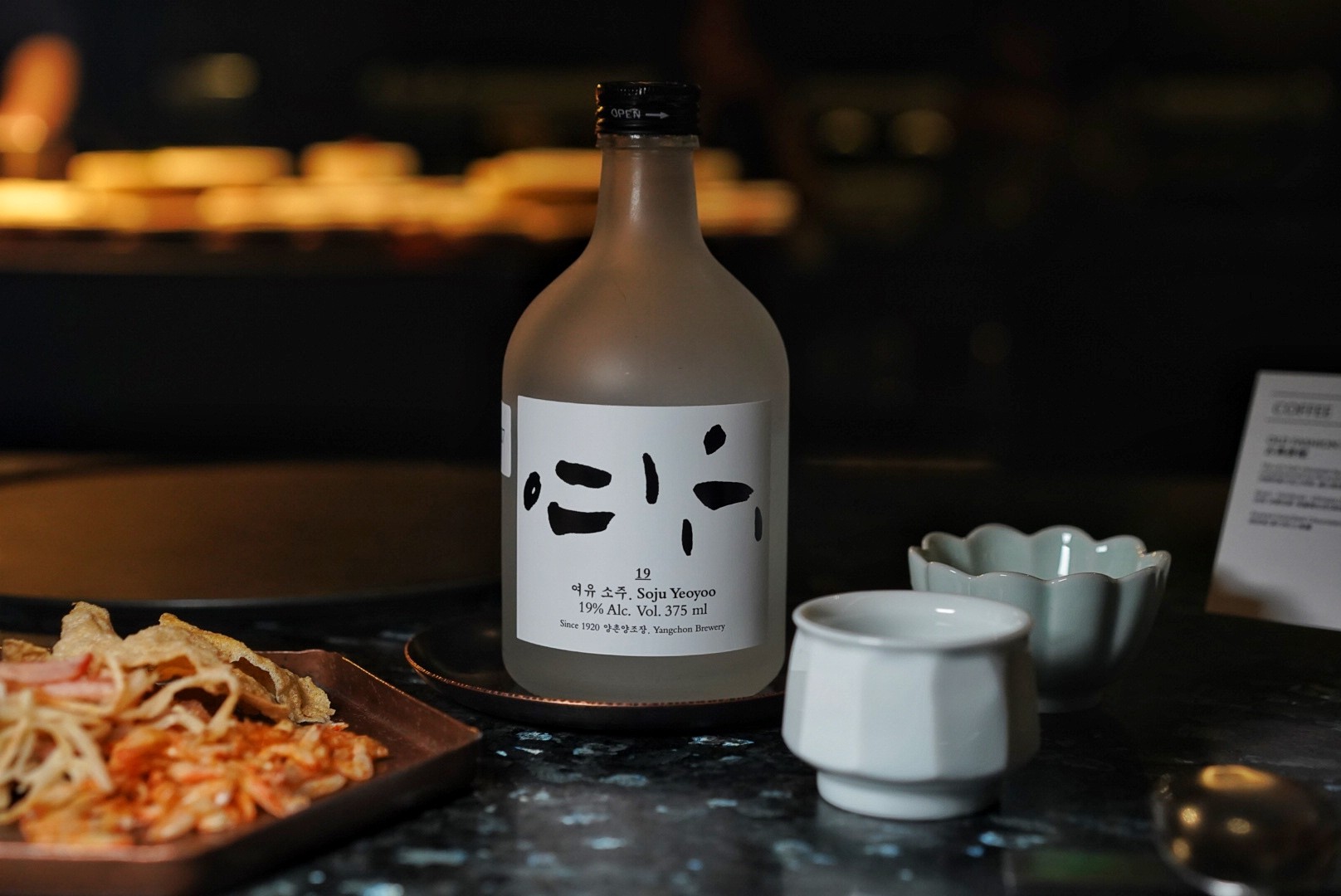
Image by Sophie Steiner/That's
The alcohol pairing is all about traditional Korean spirits – rice wine, soju, makgeolli, and the like – but boutique renditions (brewed by the first master of traditional fermented yeast in Korea, for example) that concurrently educate and inebriate patrons.
The Vibe
Outfitted in onyx hues, the minimalist, modern design aesthetic is a key focus of the 16-seater space, with collaborative partnerships between the P.I.E. team and artists in glass, metal, ceramics and fashion, with multimedia art spanning everything from glassware to dishes to Team Lab-esque visual art displays at the entrance.

Image by Sophie Steiner/That's
The otherworldly atmosphere of the established owed to the eye-catching, hanging works of art is only added to by the dreamlike concertos – from famed film composer Cho Young Wook – that evoke a backdrop sentiment of heroic sagas, the musical score building into a crescendo alongside the meal.
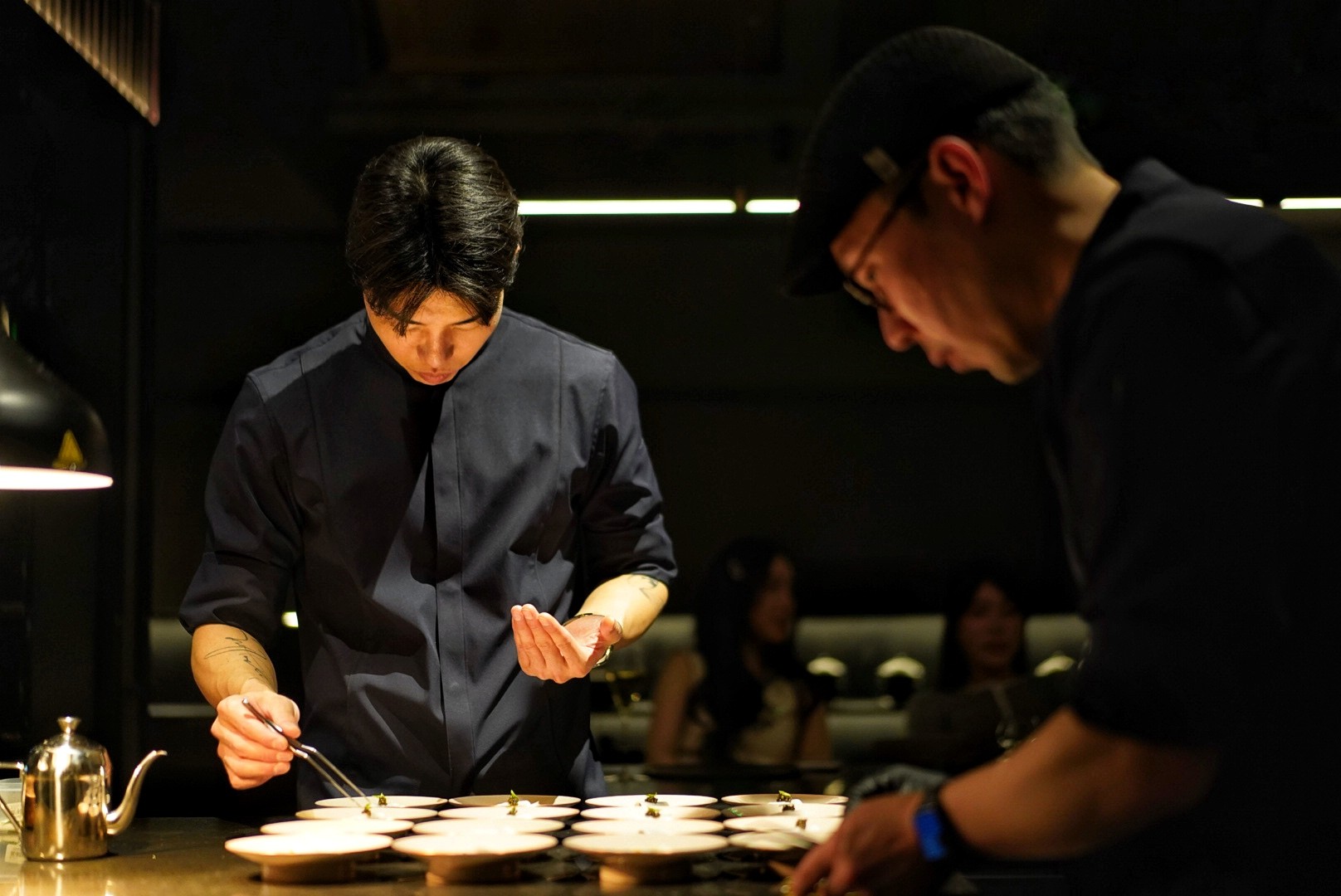
Image by Sophie Steiner/That's
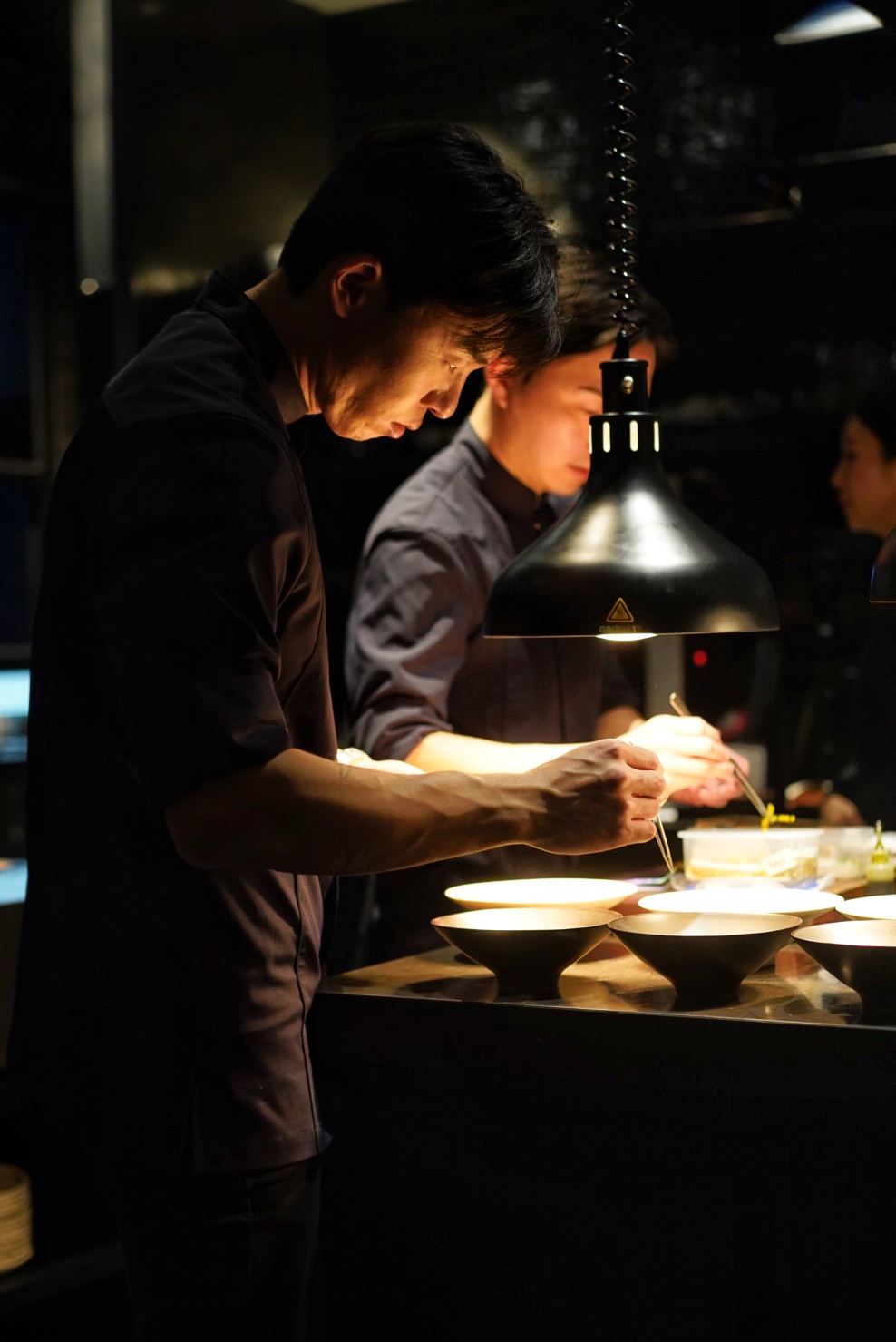
Image by Sophie Steiner/That's
Despite the fact the restaurant has only been open a few short weeks, front of house service is of the highest standard – professional and anticipatory of guests’ wants – mirroring the kitchen team’s call and answer chant that precedes service of each course, and hugging the line of The Menu, sans *spoiler alert* everyone being murdered at the end.

Image by Sophie Steiner/That's
Similar to the Jeju Sagye booking system, reservations for a month open on the first day of the previous month (for example, May reservations open on April 1) and can only be made through NABI's Official WeChat account (search NABI SHANGHAI, and message the word 'reservation'), covering two seatings per evening.
Note: NABI is closed Sundays and Mondays.
Price: RMB1,088 (+10% service charge) with an optional RMB388 for Korean alcohol pairing
Who’s Going: The South Korean expat contingency, fangirls (and boys) of Chef Tom Ryu, and the cream of Shanghai’s crop (aka those who have been lucky enough to snag a reservation, which is currently booked out through the end of April)
Good For: Regional Korean cuisine exploration, tasting menu experiences, an alternative to Western fine dining establishments of which this city already has so many
NABI, #201 WYSH, 192 Wuyi Lu, by Dingxi Lu, 武夷路192号WYSH翡悦里2层201室, 近定西路.
Read more Shanghai Restaurant Reviews.
[Cover image by Sophie Steiner/That's]






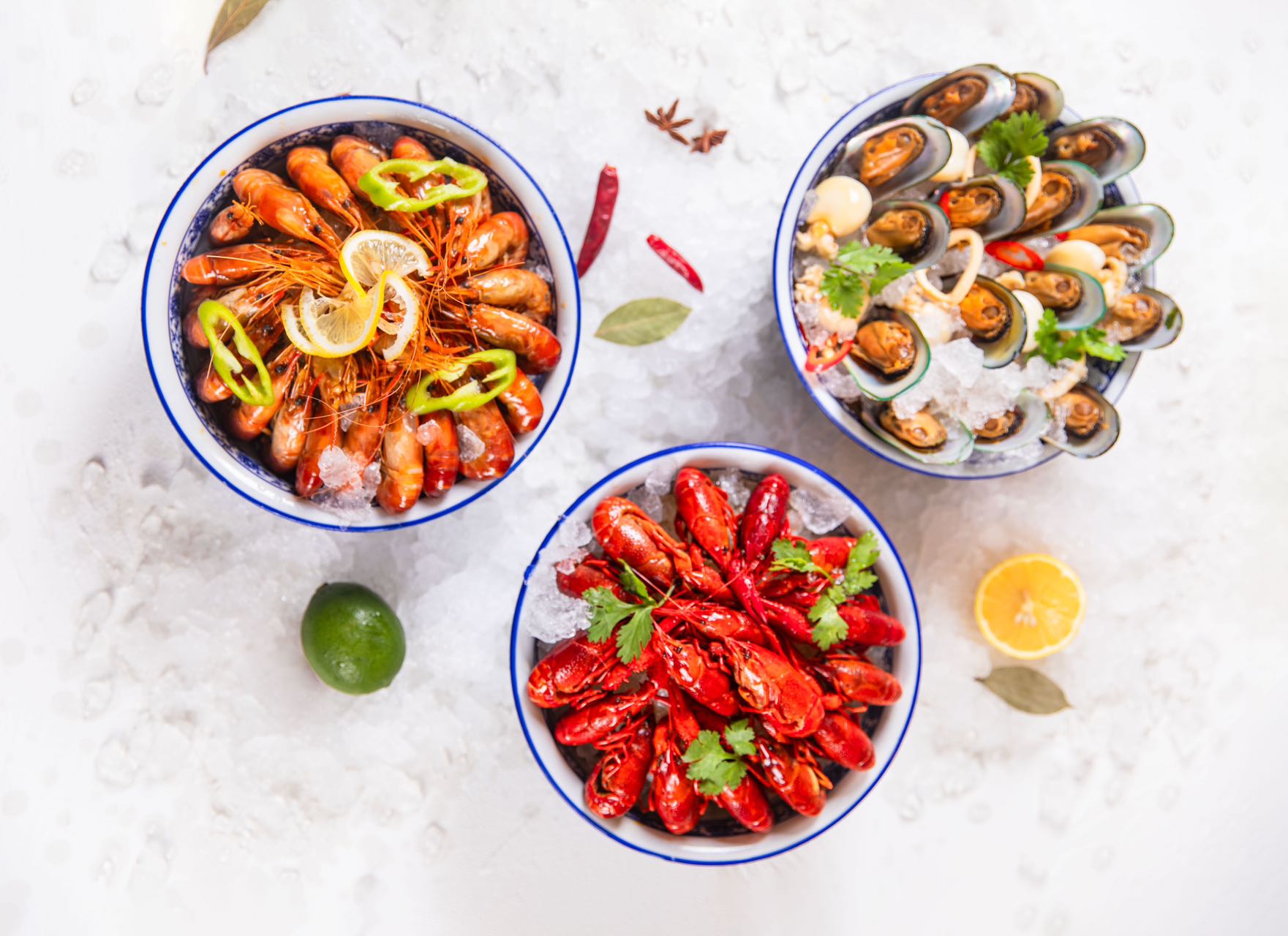














0 User Comments